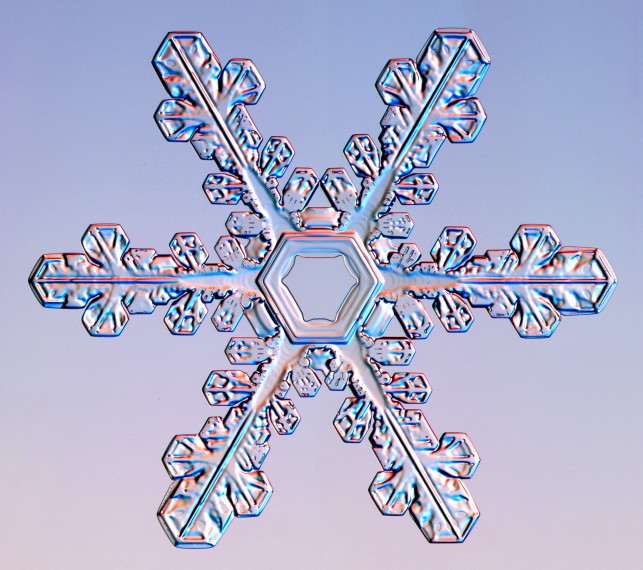Tao Quan
Are Any Two Snowflakes Alike?
Do you remember when you were a little kid and you loved to play in the snow on a cold winter day? You would go sled, or ski and enjoy the snow rushing on your face. Remember trying to catch snowflakes on your tongue, and then you would try to catch them in your hand and examine them before they melted. Well if you were like me, you asked yourself, huh, I wonder if any of these snowflakes are alike. This question has been asked for many years by people of all ages. It most likely developed from people all over the world asking this question on every snowy winter day. There are so many snowflakes every year; two of then must have been the same some point in history. This is most likely how this myth arose.
If you think to yourself, there are billions of trillions of snowflakes every year. Two of them some time in history must have been the same. This question can be answered in a couple of different ways; it really depends on your perspective of snowflakes. If you just looked through a lot of snowflakes with the human eye you could potentially find two snowflakes that looked slightly similar, but you would never find any two that were the same. If you wanted to say that any two snowflakes are totally alike you would need to look in a high powered microscope and check the snowflakes at a molecular level.
If you were to do this you would find that in the time the earth has been around, the chances of having two naturally occurring snowflakes be perfectly alike is basically zero. According to Kenneth G Libbrecht a physicist at Caltech, there are many, many diversions from a pure water molecule greatly reducing the chances of any two snowflakes being alike even before they fall. Second, according to him if you had 100 books you could arrange them almost 10^158 different ways, that “is about 10^70 times larger than the number of atoms in the universe.” This just shows the diversity you can get with only 100 objects. 100 objects doesn’t even compare to how many ways you can make a snowflake. Consider a snowflakes variation due molecules, fall time, climate, wind, etc. creating almost infinite different variations of snowflakes. With all of these possible variations the chance of finding any two perfectly alike snowflakes is next to zero. Myth busted.
“Is It True That No Two Snow Crystals Are Alike?” Everyday Mysteries. Lib. of Congress, 19 Feb. 2009. Web. 24 Jan. 2010.
Libbrecht, Kenneth G. “Is It Really True That No Two Snowflakes Are Alike?” SnowCrystals. Caltech, 1 Feb. 1999. Web. 24 Jan. 2010.

That is really interesting...I remember, in elementary school, always claiming that there were only a certain number of snowflakes--I think I claimed only about 50 types--and sorting them on black pieces of construction paper (while outside) and seeing if I could group them!! I didn't know their differences were on a molecular level. Wowzers! :]
ReplyDeleteWow, that is so cool! I never knew that. It is amazing that 100 molecules can be arranged in 10^158 ways. I think that I now understand why no two snowflakes are the same. It is hard to imagine each falling snowflake as a unique combination of water molecules!
ReplyDeleteThis is interesting. I heard on some radio show that snowflakes are grouped into something like 60 different categories, and the only differences in the categories are extremely small. Great writing.
ReplyDeleteVery nice blog.
ReplyDeleteThis myth bothered me for quite sometimes but it was nice of you to explain to me how this was false. Very nice picture that went with the article and very nice citing of your sources.
This is a very interesting blog Tao because I think every kid has had some sort of fascination with snowflakes such as sticking out your tounge and trying to catch them in your mouth.It seems like a very logical answer to the myth because probability factors of objects in general and also because snowflakes are so tiny. I loved the information... and the picture. haha Good job!
ReplyDelete